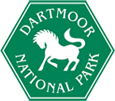Living Dartmoor - National Park Level
Key Wildlife Areas and Species for Conservation
Key Wildlife Areas
Key Wildlife Areas (KWAs) have been derived from the South West Nature Map, using local knowledge. The boundaries of KWAs should not be viewed as sharp lines - they contain adjacent areas which may have potential for expansion of the key habitat as well as existing habitats and ideally, would grade into the surrounding landscape. They should be used as a guide to inform site specific management decisions with the potential to improve the key habitat. KWAs should provide the main emphasis of landscape conservation efforts within the National Park. They cover just over two thirds of the Dartmoor national park area.
View the map of Dartmoor Key Wildlife areas
Dry Grassland Key Wildlife Areas
Rhôs Pasture Key Wildlife Areas
Flagship Species are familiar and relatively widespread species of each Key Wildlife Area. They have been chosen to represent the importance and value of the habitats which support them.
Key Wildlife Area | Flagship species |
|---|---|
Moorland | Skylark, Snipe |
Woodland | Pied Flycatcher |
Dry Grassland | Greater Butterfly Orchid |
Rhos pasture | Marsh Fritillary, Willow Tit |
Wider countryside habitats: Rivers and other water bodies | Otter, Salmon Dormouse Greater Horseshoe Bat |
Key Species for Conservation
It is clearly not possible to focus detailed conservation work on the whole variety of wildlife for which Dartmoor is important. The species listed below are of particular value and are unlikely to survive in the National Park without specific action to maintain the species, or the habitat(s) on which the species depends.
Delivery Plans have been written for each of the Key Species for Conservation
These delivery plans can be downloaded from the links in the table below.
| Key Species | Dartmoor Importance | Conservation Value |
|---|---|---|
Holds one of the largest breeding sites in Europe | European protected species; rapid national decline | |
The most southerly breeding population in the world | High conservation concern | |
The only breeding population in southern England | High conservation concern; National decline | |
3 of the 5 Devon colonies | Globally threatened; European protected species | |
One of the national strongholds | Globally threatened; European protected species; national decline | |
| * Pearl-Bordered and High Brown Fritillary Butterflies | National strongholds for both species | Both of high conservation priority; Rapid national decline |
Holds most of the British population | Nationally near threatened | |
Holds all of the British population | Nationally vulnerable | |
The largest British colony | Nationally vulnerable | |
Only found on Dartmoor and a few Cornish sites | Endemic | |
Holds most of the British population | Nationally near threatened |
* The Pearl-bordered and High brown fritillaries have been included together has they mostly occur on the same sites and require similar habitat management.
More detail about how Key Wildlife Areas and Key Species for Conservation were selected can be downloaded in the full original text of Living Dartmoor (PDF).
